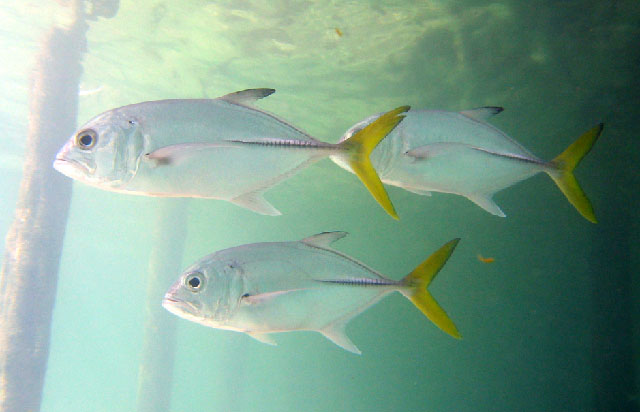| Carangidae (Jacks and pompanos), subfamily: Caranginae |
| 101 cm FL (male/unsexed); max.weight: 13 kg |
|
reef-associated; freshwater; brackish; marine; depth range 0 - 140 m, oceano-estuarine |
| Western Atlantic: New Jersey (USA), Bermuda, and northern Gulf of Mexico to São Paulo, Brazil (Ref. 57756). Eastern Atlantic: St. Paul's Rocks (Ref. 13121), Ascension Island, and two confirmed records from the Gulf of Guinea (Ref. 7097). |
|
Dorsal spines (total): 8-9; Dorsal soft rays (total): 20-22; Anal spines: 2-3; Anal soft rays: 16-17. Diagnosis: chest fully scaled (Ref. 81654). No spots on pectoral fins, spot posteriorly on gill cover small or absent; scutes tend to be dusky or blackish; caudal fin yellow; young with broad blackish bars on body (Ref. 13442). |
| A pelagic (Ref. 26340) schooling species usually found in offshore reefs (Ref. 9710). Juveniles are encountered along shores of sandy beaches, also over muddy bottoms (Ref. 9626). May penetrate into brackish water and ascend rivers. Adults feed on fishes, shrimps, and other invertebrates (Ref. 3277). Often approach divers (Ref. 9710). Eggs are pelagic (Ref. 4233). |
|
Least Concern (LC); Date assessed: 09 November 2018 Ref. (130435)
|
| reports of ciguatera poisoning |
Source and more info: www.fishbase.org. For personal, classroom, and other internal use only. Not for publication.

